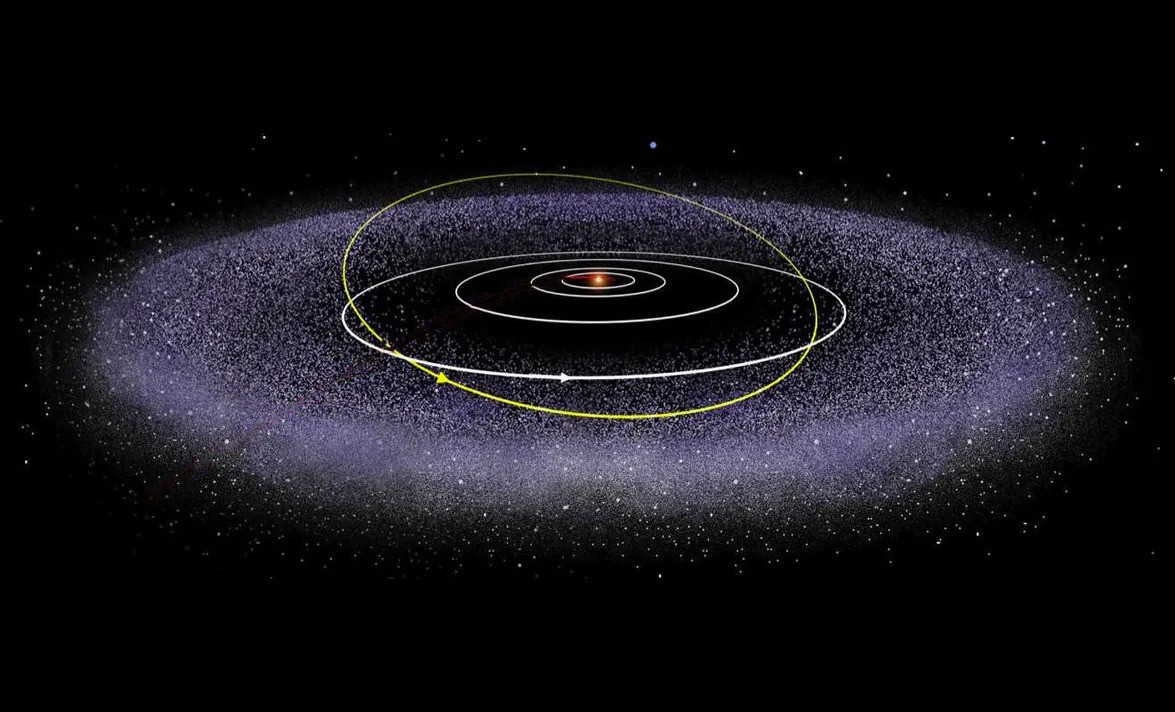Scientists studying trans-Neptunian objects with the Subaru telescope have discovered a new group of objects far beyond Neptune’s orbit. It seems that we are talking about the second Kuiper belt, much more distant from the Sun than the first. This increases the size of our stellar system and helps resolve an old contradiction.

Searching for objects with a telescope in Hawaii
A completely new group of frozen objects orbiting the Sun outside the distant Kuiper Belt has been spotted by the Subaru telescope working with NASA’s New Horizones mission to find new objects for the spacecraft to explore.
“If this is confirmed, it would be a major discovery,” said Fumi Yoshida of the University of Occupational and Environmental Health Sciences and the Planetary Research Center at Chiba Institute of Technology in a statement.
Subaru, the 8-meter (26-foot) telescope on top of Mauna Kea in Hawaii, has collaborated with New Horizons since its 2006 launch to Pluto, which the spacecraft flew by in 2015. Since then, the craft has been making its way through the Kuiper Belt, a ring-shaped region of icy cometary bodies beyond Neptune’s orbit at distances ranging from 33 to 55 astronomical units (a.u.). An astronomical unit is equivalent to the Earth’s average distance from the Sun, which is 149.6 million kilometers.
When Subaru in 2004 began looking for Kuiper Belt objects as potential targets for New Horizons to visit at close range or observe with cameras at a distance after its encounter with Pluto, the telescope ran into a problem. At that time, Pluto and the region of the outer Solar System to which New Horizons was headed were in the constellation Sagittarius, where it was difficult to identify Kuiper Belt objects from all the background stars against the dense center of the Milky Way.
Subaru had identified only 24 Kuiper Belt objects then, and they were all too far away for New Horizons to reach them or see them with its cameras after it left Pluto.
However, Pluto and this entire part of the Solar System have now moved away from the Milky Way into a more rarefied region of the night sky. Using the Hyper Suprime-Cam (HSC), Subaru has discovered 239 Kuiper Belt objects since 2020. Most of them are common, but a few look really special.
Objects outside the Kuiper Belt
The most exciting part of the HSC was the discovery of 11 objects at distances beyond the known Kuiper belt. This new group of objects is not a simple extension of the Kuiper belt. There is a gap between 55 and 70 a.u. where no objects have been found yet, and then a second belt — let’s call it “Kuiper Belt 2” — between 70 and 90 a.u., which is 13.5 billion kilometers from the Sun. For comparison, Neptune is 30 a.u. and New Horizons is 60 a.u. from the Sun, while NASA’s Voyager-1 and Voyager-2 probes are 164.7 and 137.6 a.u. from the Sun, respectively — in interstellar space.
The architecture of the Solar System, including the asteroid belt and Kuiper belt, was determined by the processes that formed the planets, including the way young Jupiter migrated through the system, scattering smaller bodies far and wide.
“I think the discovery of distant objects and the determination of their orbital distribution are important as a stepping stone to understanding the formation history of the solar system, comparing it with exoplanetary systems, and understanding universal planet formation,” said Yoshida.
New data on the Kuiper belt in the Solar System
The discovery of this new population of bodies is not unexpected. The Student Dust Counter instrument aboard New Horizons continues to record collisions with dust particles, although the frequency of collisions should decrease as New Horizons leaves the Kuiper Belt. The constant presence of dust indicates that it is produced by a population of bodies located farther away. In addition, this instrument has witnessed obscure stellar eclipses — when an object passes in front of a distant star and briefly blocks its light — that may be the product of objects in this newly discovered, more distant “Kuiper Belt 2.”
In addition, observations of protoplanetary disks around other stars, such as the ones seen by ALMA (Atacama Large Millimeter/Submillimeter Telescope in Chile), clearly show extended regions and multiple belts and gaps in the region beyond the Kuiper Belt in our Solar System.
Since the Kuiper belt seemed small, one theory was that the solar nebula that formed our planetary system was also smaller than usual. The discovery of the “Kuiper Belt 2” indicates that this was not necessarily the case.
“The primordial solar nebula was much larger than previously thought, and this may have implications for studying the planet formation process in our solar system,” said Yoshida.
Revolutionary discovery for astronomy
Astronomers will continue to use Subaru to track 11 objects in the new belt to better determine their orbits. Given that they were found in a small region of space, they are likely just the tip of the iceberg and hint at a much larger population. Their discovery is further proof that there is still much to be discovered in the extreme depths of the outer Solar System, including the possibility of the existence of more dwarf planets and even a hypothetical ninth planet.
“This is a groundbreaking discovery revealing something unexpected, new and exciting in the distant reaches of the solar system,” said Alan Stern, principal investigator of the New Horizons mission. “This discovery probably would not have been possible without the world-class capabilities of the Subaru Observatory.”
The results of the study will be published in the Planetary Science Journal, but for now, they are available as a preprint.
According to phys.org


